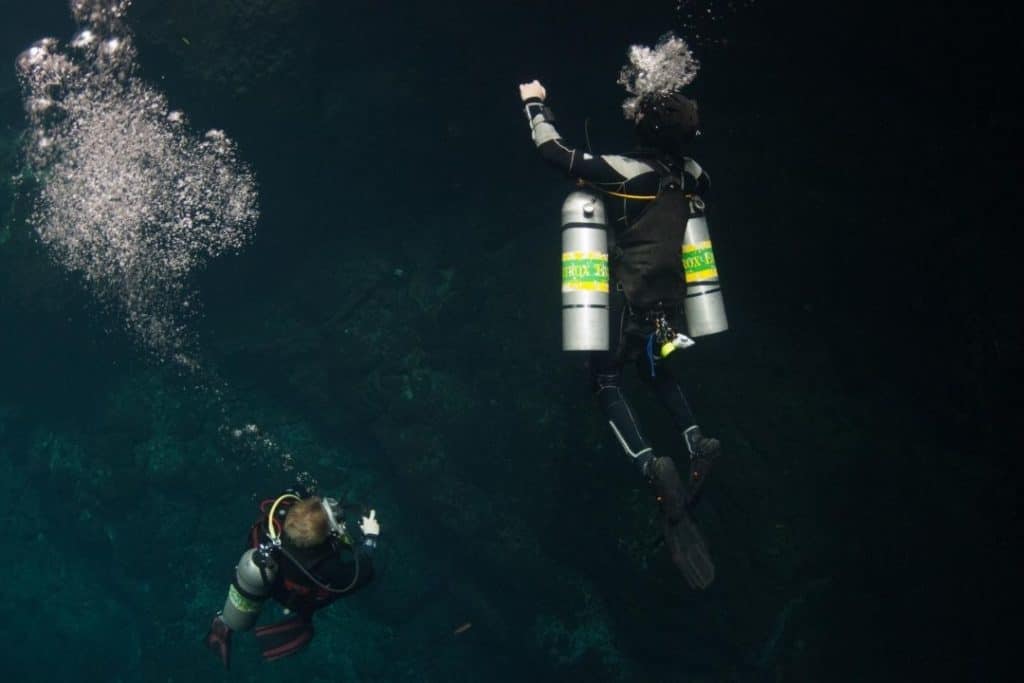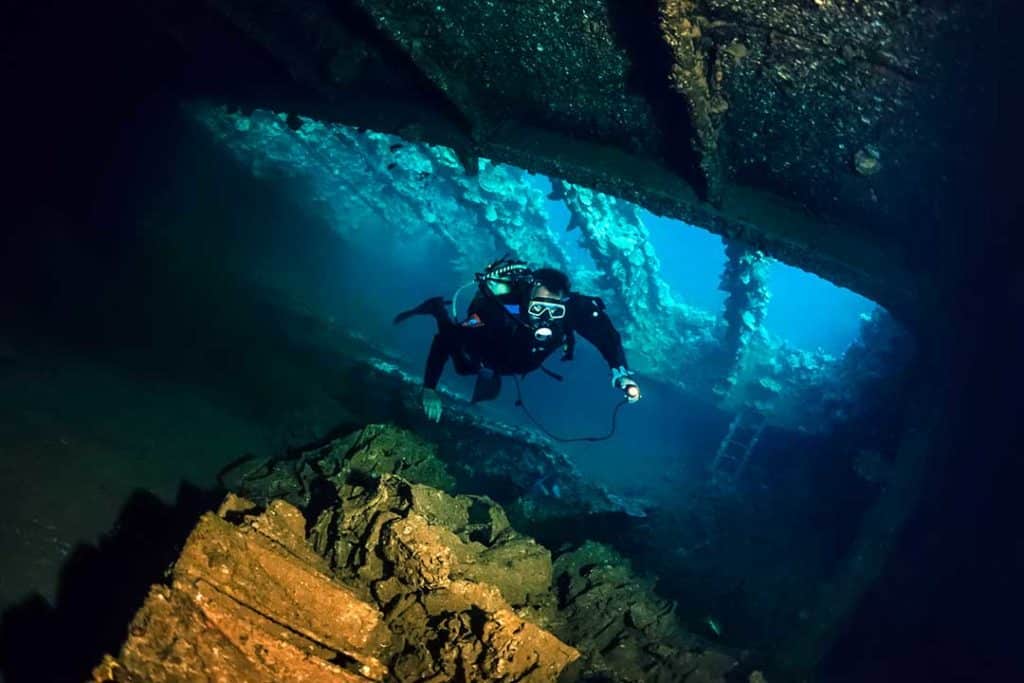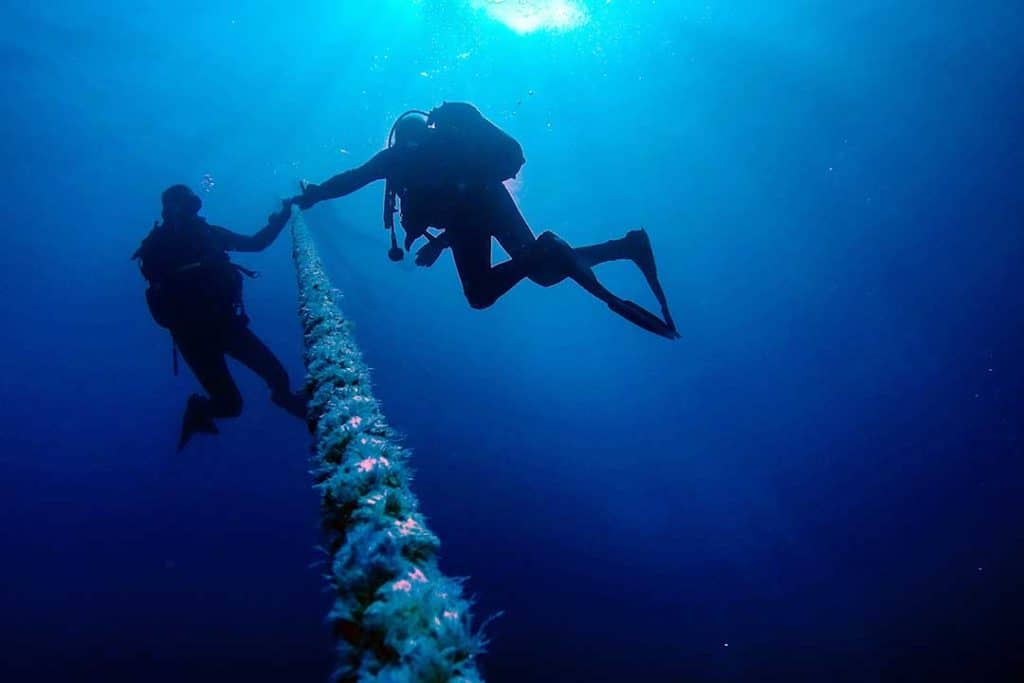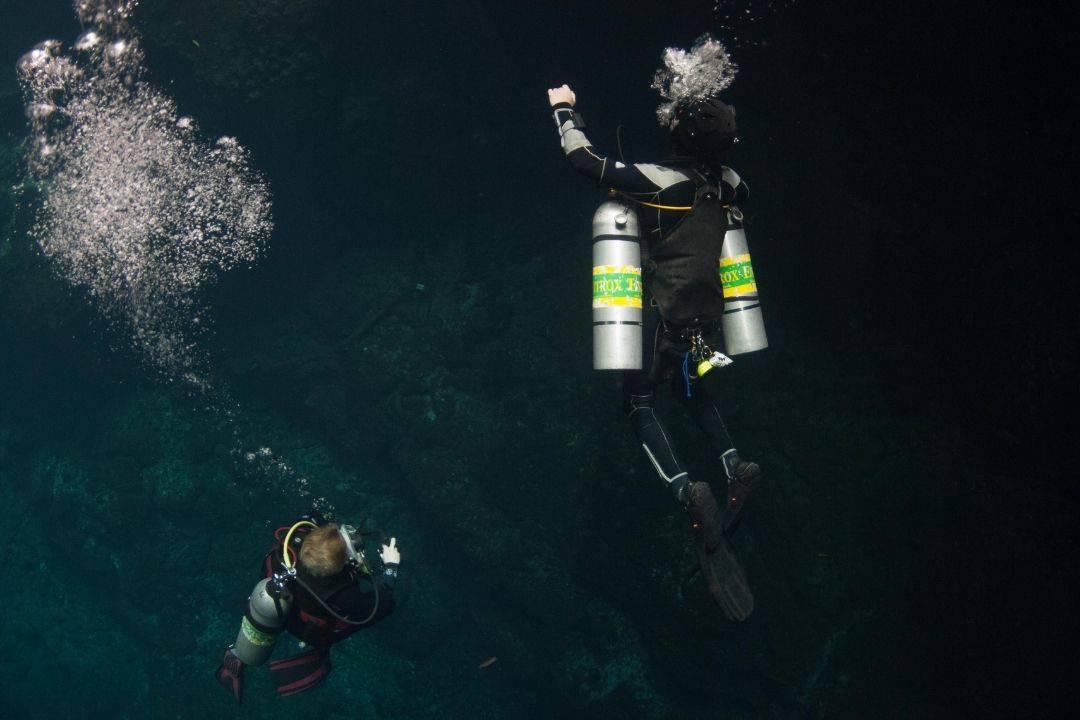Does a short bottom time at a favorite dive site have you bummed? Maybe you had a life milestone that has you looking at risk differently. It may be time for you to explore Enriched Air Benefits and become an Enriched Air Nitrox diver.
Enriched Air Nitrox (EAN) or often just referred to as Nitrox is a breathing gas that has an oxygen content higher than the 21% found in the air in the atmosphere.
Using a breathing gas with more oxygen means less nitrogen is inhaled which has some benefits. Recreational divers who have been trained to use EAN can use up to 40% oxygen in their dive cylinders.
The most common mixes are 32% (EAN-32) and 38% (EAN-38), however, any percentage can be blended.
In this article we will discuss Enriched Air Nitrox Benefits, and dive planning that take those benefits into consideration.
A question many new divers ask is :
Do I need Nitrox and how do I benefit from using it?
You should consider using Nitrox (enriched air) any time you are diving in waters 50 feet (ca. 15 m) to 100 feet (ca. 30 m) deep. The benefits will be a safer dive, deeper at the same NDL or one with an extended bottom time.
Longer Bottom Time

The most commonly cited Enriched Air benefit is an extended No Decompression Limit (NDL). As a diver, you know that your bottom time is determined by either your air consumption or your NDL time.
When you are diving in shallow water, the NDL time is much longer than your air consumption.
However, as you dive deeper, the increased pressure causes more nitrogen to be absorbed by your body, reducing the time you can stay at depth before decompression sickness becomes a concern.
At some point, there will be a shift from air consumption to nitrogen absorption being the controlling factor. The standard dive tables, and computer logarithms, are based on 21% oxygen and 79% nitrogen.
When we are diving an EAN mix, the oxygen/nitrogen percentages are different. The lower percentage of nitrogen means less is being absorbed by our bodies.
Let’s look at planning a dive to 80 feet (ca. 24 m), using air, our NDL is 30 minutes. If we plan a dive to the same depth using EAN-32, we can plan for a 45 minute NDL dive.
Increasing our EAN to 38% adds another 5 minutes. Visiting that wreck at 80 feet with Nitrox, we get a longer dive, and we are more likely controlled by our air consumption than the NDL.
Diving Deeper with the Same Bottom time

The above dive plan allows us to dive longer at a given depth. We can also apply the principal of less nitrogen absorption to allows us a greater depth with the same bottom time.
When we look nitrogen impact on our bodies while using EAN and compare it to using air we come up with what is called equivalent air depth (EAD). A dive table will tell us we can dive to 80 feet using air (ca. 24 m), and our NDL is 30 minutes.
If we use EAN, we will be able to dive deeper in those 30 minutes and still be within same levels. When we dive using EAN-32, we can go as deep as 98 feet (ca. 30 m) and still have a 30 minute NDL.
To phrase it differently, The EAD of EAN-32 at 98 feet (ca. 30 m) is 80 feet (ca. 24 m) on air. An EAN-38 will allow us to dive to 109 feet (ca. 33 m) for 30 minutes as well. Our bodies will absorb the same amount of nitrogen in the stated time period in the three different situations.
Do not jump to the conclusion that a benefit of using enriched air is diving deeper.
EAN does not allow you to dive deeper, it might allow you to dive deeper for a selected NDL, However there are other factors involved. We all know that oxygen is essential to life. If we do not have enough oxygen our bodies will shut down, and we will die.
What most people do not know is that too much oxygen can act as a poison to us and cause convulsions and other complications leading to death. In our normal everyday life, this situation will not occur.
However, when atmospheric pressure is increased it does happen. The topic of oxygen toxicity is one of the primary topics in an EAN course.
That course will introduce you to the term Maximum Operating Depths or simply MOD. The MOD is a calculation involving the percent of oxygen and the pressure required to reach the maximum safe level expressed as PO2.
Depending on the training organization a PO2 of 1.4 or 1.6 is considered the highest acceptable level. The pressure is converted to depth, and is the deepest depth considered safe for the percent of oxygen you are using.
Using the PO2 of 1.6, a diver using EAN-32 can dive to 130 feet (ca. 40 m). While using the same PO2, a diver using EAN-38 can only dive to 106 feet (ca. 32 m). An real eye-opener, 100 percent oxygen reaches the PO2 level in only 20 feet (ca. 6 m) of water.
Each diver using Nitrox on a dive should analysis the content of their tanks before starting a dive, and then mark the tank with the MOD. Dive computers will allow you to input the oxygen percentage and many will allow you set which PO2 factor you prefer.
Safer Diving Using Same Bottom Time

Decompression sickness can happen to anyone on any dive. It can even happen when we are following all the “rules”. Dive tables and computers provide great guidance for safe diving, however, every person is different. The closer we get to a NDL, the more risk we are taking.
A funny thing happens to many people when they have a life milestone such as getting married or having a child. They reevaluate the risk they are willing to take in their life’s. A diver using air at 80 feet (ca. 24 m) for 30 minutes, is at their NDL.
However, their dive buddy using EAN-38 following the same dive profile will be 20 minutes away from their NDL. For a repetitive dive, the EAN-38 diver will start in one group lower. The EAN diver will have a larger potential safety buffer.
Are Any Of These Benefits Important To You?
Most of us start our diving certification as an Open Water Diver. The next logical step is taking an Advance Open Water certification. If you are already an AOW diver, or planning on becoming one soon, add the EAN diver certification.
As you can see, the use of EAN can enhance your diving.
Which of these benefits appeal to you the most? Feel free to add your comments or share your EAN experiences in the comment section.


